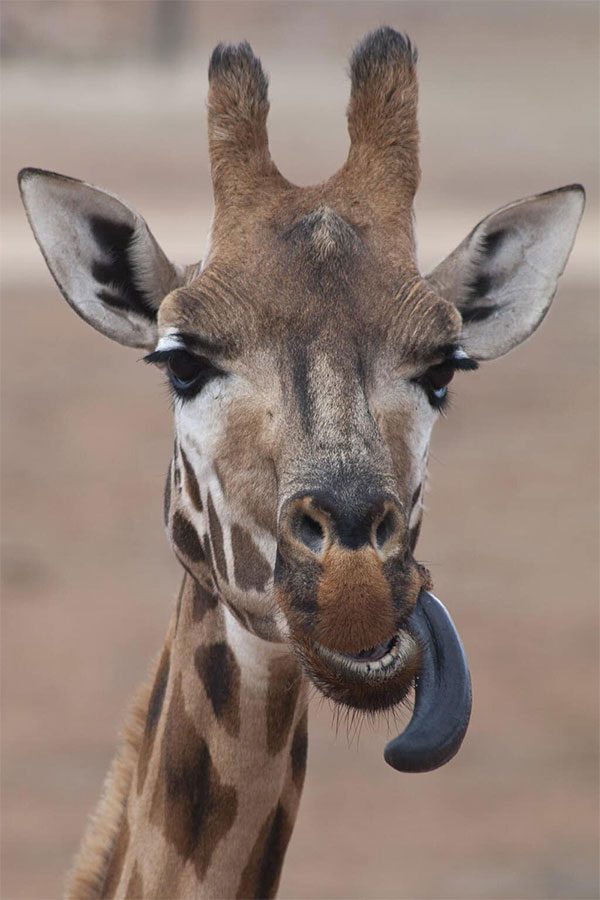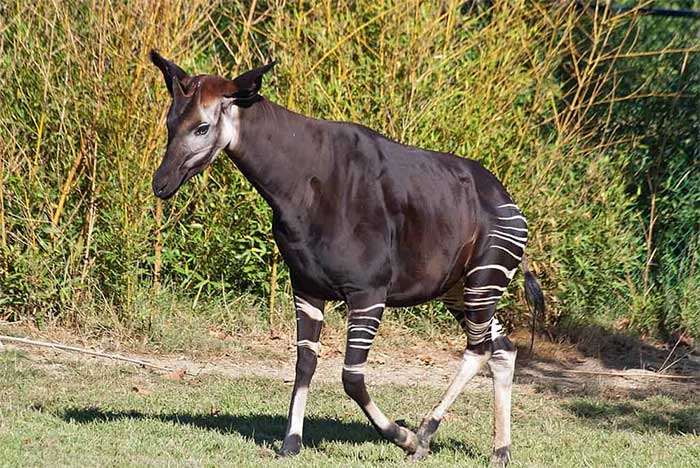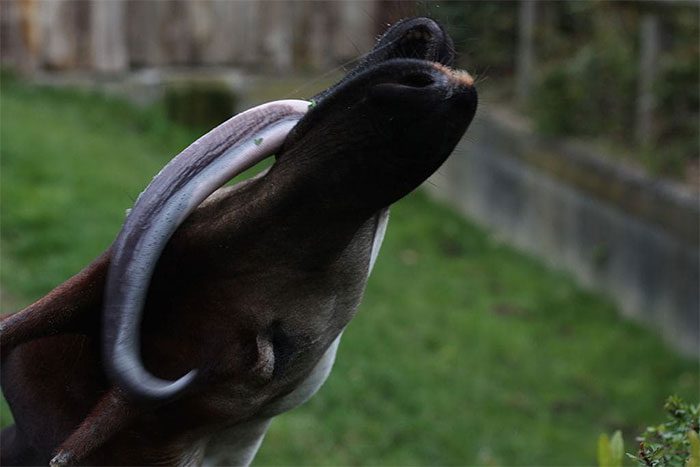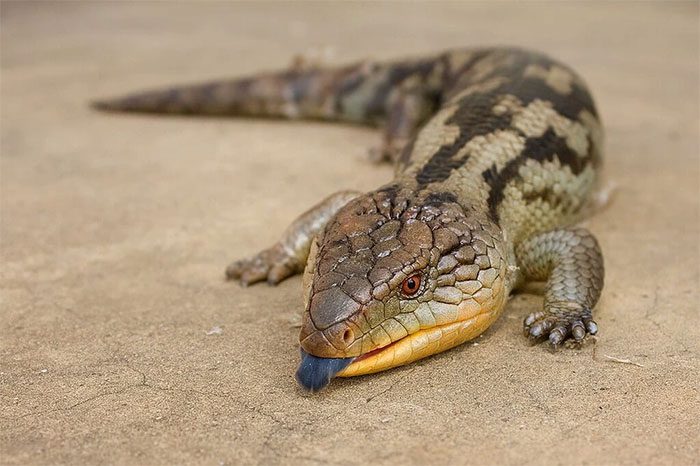In fact, the giraffe is not the only animal with a strangely colored tongue.
Why Giraffes Have Purple Tongues
Giraffes are herbivores, which essentially means they are large animals that primarily eat plants, similar to elephants. However, they also share similarities with smaller herbivores like cows. This is because giraffes are ruminants; they are designed to digest cellulose, the substance that makes up plant cell walls.
They spend a lot of time eating and foraging for food, with adult giraffes spending over 20 hours a day just walking around looking for food. Under the blazing sun of Africa, it’s not only their bodies that have to endure the heat; the giraffe’s tongue does as well.
Since giraffes spend most of their time eating, their tongues, which are made up of epithelial cells (the same material that forms skin), also stick out of their mouths for about 20 hours each day. Without protection, that tongue would certainly get burned by the sun.

Having a dark purple tongue is considered a result of natural selection. Because they often “dine” on high canopies, their tongues must frequently be exposed to the sun’s harmful rays. Therefore, giraffes have undergone changes to produce more melanin, protecting their tongues from ultraviolet rays. (Photo: ZME)
You might think that the color of the tongue is not a big deal. However, in the world of science, every detail matters. The giraffe’s tongue is not just dark purple; it has a specific shade leaning towards blue or black, depending on the light. This distinctive color is not a peculiar choice of nature.
This unusual color is produced by melanin to prevent severe sunburn. This pigment is what gives the giraffe’s tongue its dark color (purple or blue). Although there are still gaps in research, scientists have long believed that this dark-colored area of the tongue—due to high melanin density—protects the giraffe’s tongue from the intense ultraviolet rays of the African savanna.
In fact, the giraffe’s tongue is not only dark purple but is also strangely long—about 50 cm.

The tongue of giraffes measures about 50 cm in length. Giraffes can use their tongues to grasp objects, scratch their noses, and clean their ears, similar to the function of an elephant’s trunk. This snake-like tongue is particularly useful for grabbing food as giraffes simply lick around the leaves and then pull them into their mouths. (Photo: ZME).
Other Animals with Dark-colored Tongues
Although not common, purple or blue tongues have also been observed in other animal species across various habitats. From polar bears to lizards, an unusual group of animals forms a collection with purple tongues.
Okapi
Equipped with giraffe-like legs, zebra patterns, and the head of a giraffe, the Okapi is considered one of the strangest surviving animals today. The Okapi (also known as the forest giraffe or zebra giraffe) is the only living relative of the giraffe. Similar to their cousins, they also possess a tongue that is purple/blue.

The Okapi is one of the oldest mammal species in the world. They are concentrated in Central Africa and are currently threatened by deforestation. Over the past decade, the population of zebra giraffes has decreased by more than 60%. (Photo: ZME)

Okapis can clean their ears with their long tongues. The closest relative of the Okapi is the giraffe. There are a total of 9 subspecies of giraffes, 3 of which are classified as endangered and at risk of extinction, including the Kordofan giraffe, Nubian giraffe, and Reticulated giraffe. (Photo: ZME).
Polar Bears
It’s not just the hot places of the world that are home to animals with purple tongues; cold regions also have species with dark tongues. In the northern Arctic Circle, the polar bear is another example of strange tongues in nature. Interestingly, polar bears are not born with dark tongues. As cubs, they have the characteristic pink tongue like ours. Over time, this color darkens to blue-purple or black—matching the skin tone of this bear species—while the polar bear’s fur is white.
Essentially, unlike the Okapi and giraffe in Africa, the polar bear’s tongue is not dark to protect against sunlight but rather to absorb light.

Polar bears are quickly recognized by their distinctive white fur. However, their fur is not white but colorless and hollow, similar to white hair in humans. When viewed under ultraviolet light, the fur of this bear appears black. For humans and most animals that see regular light, polar bears blend nearly seamlessly with the snow in their surroundings. (Photo: ZME).
Blue-tongued Skinks
A study from 2018 conducted by researchers at Macquarie University in Australia found that skinks, such as the blue-tongued skink, use their blue tongues as a last resort against predators.

Blue-tongued skinks use their tongues as a last resort against predators. (Illustration: ZME)
The lead author of the study, Arnaud Badiane, stated that blue-tongued skinks use their colorful tongues in conjunction with other aggressive behaviors, such as hissing, to intimidate and confuse their attackers.




















































